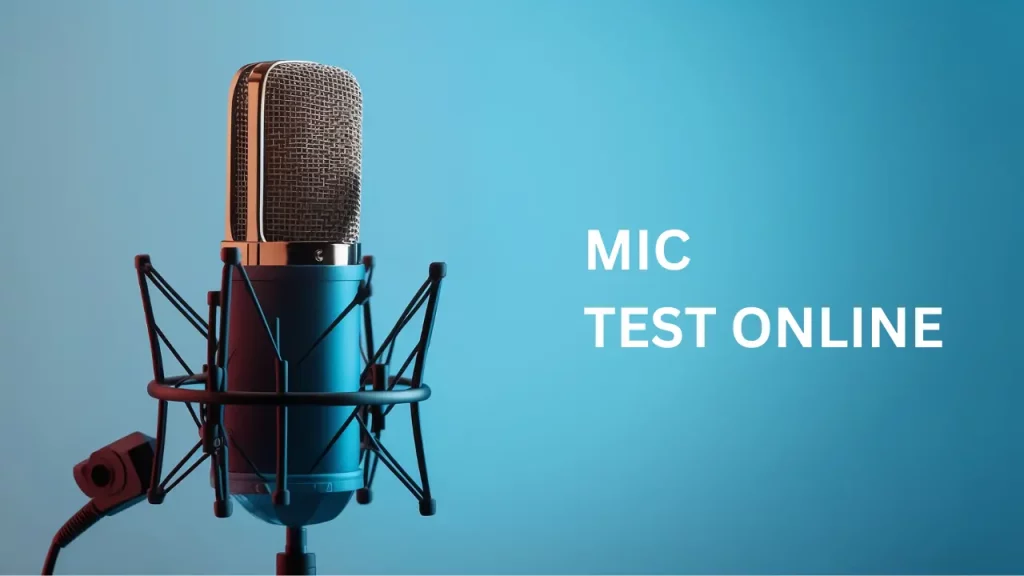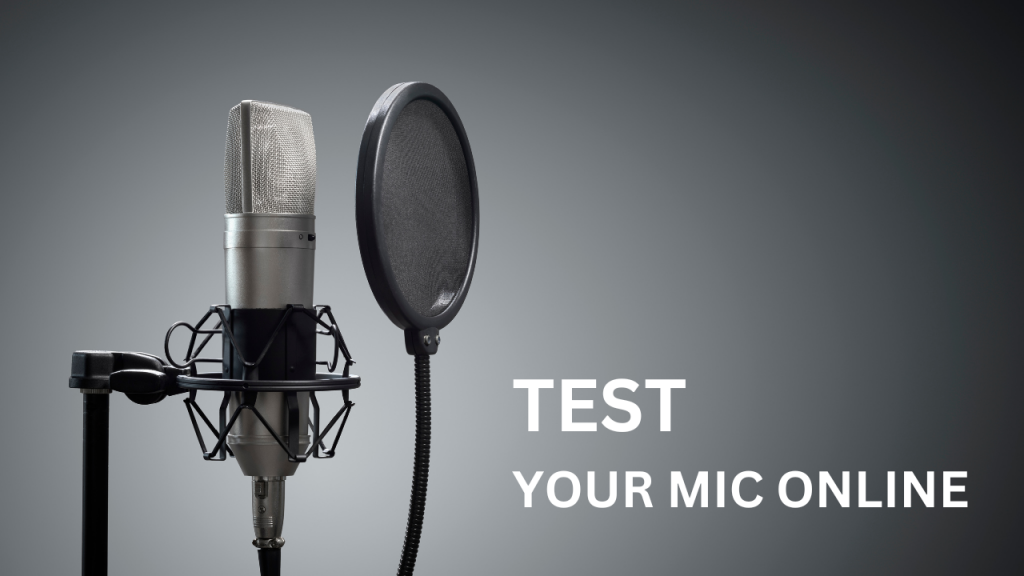Mic Test Online
To start the microphone test you don’t need to download any programs, just click the button below. The test will be conducted online in the browser.
Click “Start Test” to check your microphone.
Mic Test Quickly and easily check your microphone’s performance to ensure clear and accurate audio for all your online needs. Microphones are essential tools in our daily digital interactions, whether for virtual meetings, gaming, or content creation. Ensuring your microphone works correctly is crucial, and that’s where a mic test online comes into play. This guide will walk you through everything you need to know about mic tester, from what they are to how you can perform one easily.
What Is a Mic Test and How It Works
A mic test is a process that helps you check if your microphone is functioning properly. It involves analyzing the microphone’s ability to capture sound and transmit it accurately to your computer or other devices. The test can be performed online using web-based tools or through software installed on your device.
When you start a test mic online, the tool usually prompts you to allow access to your microphone. Once granted, the tool captures audio input from the microphone and processes it to display the results, such as the mic level, frequency response, and any potential issues like noise or distortion.
Most online mic tests use the Web Audio API, a feature supported by modern web browsers. This API allows the tool to process audio directly within your browser without requiring any downloads or installations, making it a convenient option for quick checks.

Why Do You Need a Mic Test?
Testing your microphone is important for several reasons:
- Ensuring Clarity in Communication: Whether you’re in a virtual meeting or recording a podcast, clear audio is crucial. A mic tester helps you verify that your microphone is capturing your voice accurately and without interference.
- Troubleshooting Audio Issues: If you experience issues like low volume, static noise, or echo during calls, a mic test can help diagnose these problems. By analyzing the test results, you can determine if the issue lies with the microphone, the software settings, or the connection.
- Preparation for Live Events: Before going live on a webinar, stream, or online class, running a mic test ensures that everything is set up correctly. This preparation can prevent embarrassing technical difficulties during your live event.
- Optimizing Audio Quality: For content creators and professionals who rely on high-quality audio, regular test online are essential. These tests help you maintain optimal audio quality by identifying potential issues early and allowing you to make necessary adjustments.
How to Test Your Mic?
Testing your microphone is a straightforward process, and you can do it using various methods:
- Online Mic Test Tools: Many websites offer free online mic test tools that work directly in your browser. These tools usually involve a simple interface where you click a button to start the test, speak into your microphone, and see the results on-screen. The test may include visual indicators like sound level meters or frequency graphs to help you understand how your microphone is performing.
- Built-in OS Tools: Both Windows and macOS offer built-in tools to test your microphone. On Windows, you can use the “Sound Settings” menu, where you’ll find an option to test your mic under the “Input” section. On macOS, you can go to “System Preferences,” select “Sound,” and test the microphone from the “Input” tab.
- Third-Party Software: For more advanced testing, you can use audio recording software like Audacity. This software allows you to record and analyze your microphone’s performance in greater detail, including frequency response and noise levels.
- Using Communication Apps: Apps like Zoom, Skype, and Discord often have built-in mic testing features. These are useful if you need to check how your microphone performs in specific communication environments.
How Is the Microphone Being Tested?
When you perform a mic test, the following aspects of the microphone’s performance are usually evaluated:
- Audio Input Level: The test measures the microphone’s input level, indicating how well the microphone captures your voice. If the level is too low, it might suggest issues with the microphone’s sensitivity or your device’s audio settings.
- Frequency Response: This refers to the range of sound frequencies the microphone can capture. A good microphone should pick up a broad range of frequencies, from deep bass to high treble. The test may show how well your microphone captures different frequencies, helping you identify if it misses certain ranges.
- Noise and Distortion: The test can also detect background noise or distortion in the audio. High noise levels might indicate issues like poor microphone quality or environmental factors that interfere with clear audio capture.
- Latency: Some tests measure the delay between when you speak and when the audio is processed and heard. High latency can be problematic in live communication settings, so it’s important to keep this as low as possible.
System Requirements
To perform a mic test, you’ll need to meet some basic system requirements:
- Modern Web Browser: If you’re using an online mic test tool, ensure your web browser supports the Web Audio API. Popular browsers like Google Chrome, Mozilla Firefox, Safari, and Microsoft Edge all support this feature.
- Microphone: Obviously, you need a functioning microphone. This could be a built-in microphone on your laptop, an external USB microphone, or a headset microphone.
- Stable Internet Connection: While the actual mic test doesn’t consume much data, having a stable internet connection ensures the tool loads correctly and performs the test without interruptions.
- Permissions: You’ll need to grant your browser or software permission to access your microphone. This is a standard security measure to prevent unauthorized access to your device.
- Audio Drivers: Ensure your device’s audio drivers are up to date. Outdated drivers can cause issues with microphone detection and performance.

Also Check: CPS Test
Privacy
All operations required for testing are performed by the browser and all data is stored in the user’s device memory. We do not store technical information until the user publishes feedback about their microphone. If the user does not publish a review, all data from the device memory is deleted when the page is closed. Reviews are publicly available and contain only technical information about the microphones tested. We never store audio recordings made with your microphone.
Disclaimer
Because the test results depend on various factors, it is impossible to guarantee an error-free algorithm. Nevertheless, we will constantly work on improving our testing tool and fixing the discovered errors. So if you find any errors or have any suggestions, please contact us at tayyab.malik620@gmail.com.
